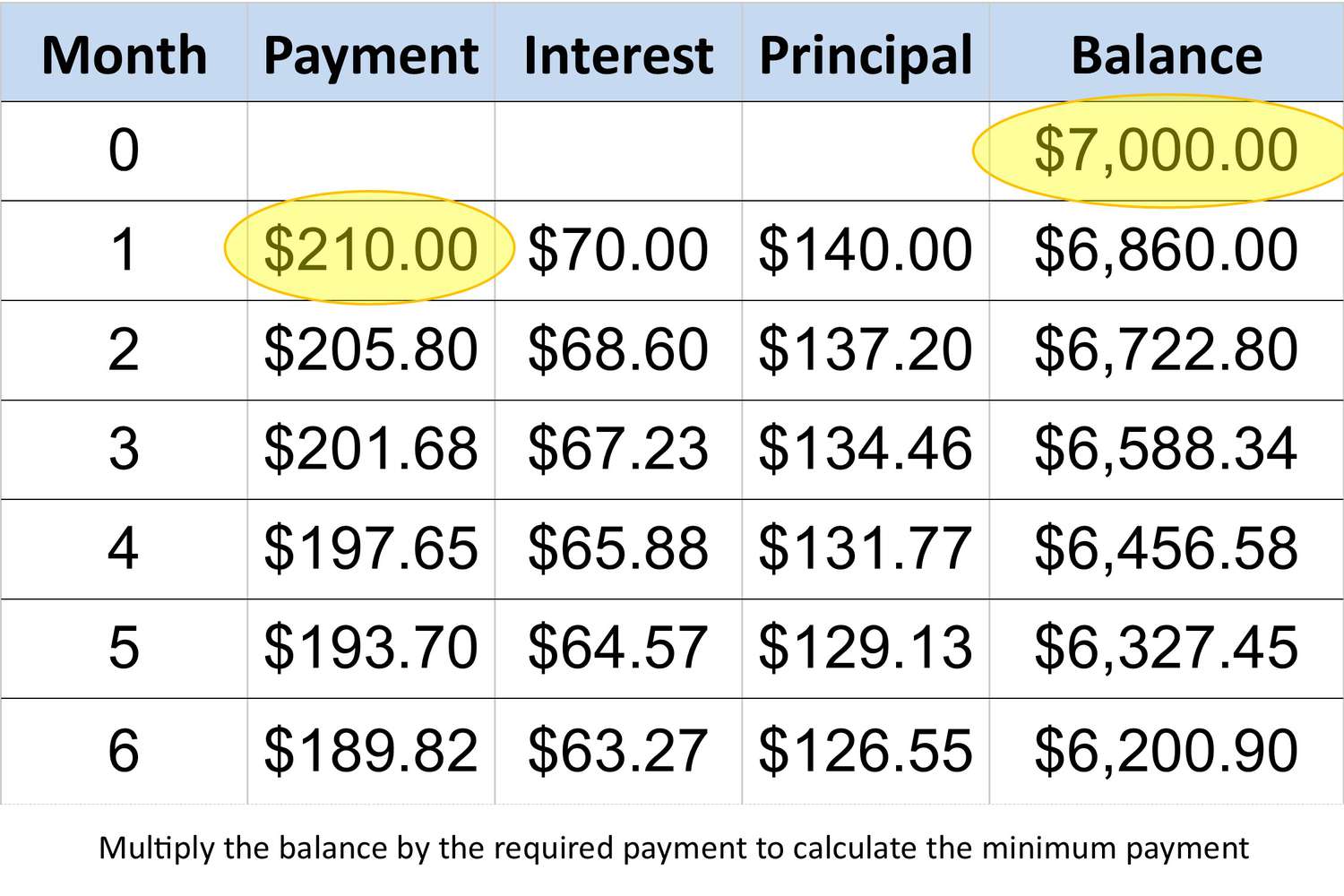

Finance
How To Survive During Inflation
Published: October 19, 2023
Looking for finance tips to survive during inflation? Learn effective strategies to manage your finances and navigate through rising prices and economic fluctuations.
(Many of the links in this article redirect to a specific reviewed product. Your purchase of these products through affiliate links helps to generate commission for LiveWell, at no extra cost. Learn more)
Table of Contents
- Introduction
- Understanding Inflation
- Importance of Survival Strategies
- Budgeting and Financial Planning
- Investing in Inflation-Proof Assets
- Hedging against Inflation
- Protecting Your Income
- Managing Debt and Loans
- Diversifying Your Income Sources
- Cost-Cutting Measures
- Adapting to Changing Market Conditions
- Conclusion
Introduction
Welcome to the world of finance, where the ever-changing economic landscape constantly presents new challenges and opportunities. One such challenge that can have a profound impact on individuals and businesses alike is inflation. Inflation is an increase in the overall price level of goods and services in an economy over time. It erodes the purchasing power of money, making it crucial for individuals to have survival strategies in place.
Understanding inflation is the first step towards developing effective survival strategies. Inflation can be caused by various factors such as excessive money supply, increased production costs, or changes in consumer demand. It can range from mild to hyperinflation, with the latter leading to a rapid and uncontrollable increase in prices.
The importance of survival strategies during inflation cannot be overstated. Without proper planning and management, the value of your assets and income can significantly diminish. Inflation can make it harder to cover essential expenses, jeopardize your financial goals, and erode your savings.
This article aims to guide you through some key survival strategies to help you navigate through inflationary periods and come out unscathed. By implementing these strategies, you can not only protect your financial well-being but also seize opportunities that arise during times of inflation.
Understanding Inflation
Inflation is a complex economic phenomenon that affects the purchasing power of money. It is important to have a basic understanding of how inflation works in order to develop effective survival strategies.
Inflation occurs when there is an overall increase in the price level of goods and services in an economy over a period of time. This means that you need more money to buy the same amount of goods and services. Inflation is measured by various indices, such as the Consumer Price Index (CPI) or the Producer Price Index (PPI).
There are several factors that can contribute to inflation. One major cause is the increase in the money supply. When there is too much money in circulation, more people have purchasing power, which leads to an increase in demand. As demand exceeds supply, prices go up. Additionally, inflation can be caused by rising production costs, such as wages, raw materials, or energy prices. Changes in government policies, such as taxation or subsidies, can also impact inflation.
Inflation can have both positive and negative effects on the economy. Mild inflation, within a reasonable range, is considered healthy for the economy as it encourages spending and investment. However, when inflation rates become excessive, it can lead to a decrease in purchasing power, reduced consumer confidence, and distortions in the economy.
Understanding the different types of inflation is also important. Demand-pull inflation occurs when demand exceeds supply, leading to an increase in prices. Cost-push inflation, on the other hand, occurs when production costs rise and businesses pass on those costs to consumers. Built-in inflation refers to inflationary expectations ingrained in the behavior of workers and businesses, which cause wages and prices to rise.
By understanding the causes and types of inflation, you can better anticipate and plan for its impact on your financial well-being. In the next section, we will explore the importance of survival strategies during inflationary periods.
Importance of Survival Strategies
During periods of inflation, having effective survival strategies becomes crucial to protect your financial well-being. Inflation can erode the value of your assets and income, making it difficult to cover essential expenses and achieve your financial goals. Here are some key reasons why survival strategies are important:
- Preserving Purchasing Power: Inflation reduces the purchasing power of money, meaning that the same amount of money can buy fewer goods and services over time. By implementing survival strategies, you can take proactive measures to preserve your purchasing power and ensure that your money retains its value.
- Protecting Savings and Investments: Inflation can have a significant impact on your savings and investment portfolio. Without proper strategies in place, the value of your savings can dwindle, and your investments may not provide the desired returns. Survival strategies help you mitigate the effects of inflation and protect your hard-earned savings and investments.
- Mitigating Financial Risks: Inflation introduces new financial risks that need to be managed effectively. Rising prices can impact the affordability of essential items, such as housing, food, and healthcare. Survival strategies enable you to mitigate these risks and adapt your financial plans to counter the effects of inflation.
- Seizing Opportunities: Despite the challenges posed by inflation, there can also be opportunities to capitalize on. Certain sectors and assets tend to perform well during inflationary periods. By implementing survival strategies, you can position yourself to leverage these opportunities and potentially benefit from the changing economic landscape.
- Building Financial Resilience: Having survival strategies in place can help you build financial resilience. It gives you the ability to weather economic downturns and adapt to changing market conditions. By being prepared and proactive, you can navigate through inflationary periods with more confidence and stability.
Survival strategies are not just limited to individuals but also apply to businesses and organizations. The ability to adapt and thrive during inflation can be the difference between success and failure. Whether you are an individual or a business owner, implementing effective survival strategies is essential for your financial well-being.
In the following sections, we will explore some key survival strategies that you can adopt to navigate through inflation and protect your finances.
Budgeting and Financial Planning
One of the most fundamental survival strategies during inflation is to establish a solid budgeting and financial planning framework. A well-crafted budget helps you take control of your expenses and ensure that you can meet your financial obligations even during inflationary periods. Here are some key steps to follow:
- Analyze Your Expenses: Start by analyzing your current expenses and categorize them into essential and non-essential categories. This will give you a clear understanding of where your money is going and where you can potentially cut back.
- Create a Realistic Budget: Based on your expense analysis, create a realistic budget that includes all your necessary expenses, such as housing, utilities, groceries, transportation, and healthcare. Allocate a portion of your income for savings and emergency funds.
- Review and Adjust Regularly: Regularly review and adjust your budget to accommodate changes in your financial situation and inflationary pressures. This ensures that your budget remains aligned with your financial goals and helps you stay on track.
- Track Your Spending: Monitor your actual spending against your budget regularly. This will help you identify any areas where you may be overspending and allow you to make necessary adjustments to stay within your budget.
- Explore Cost-Saving Strategies: Look for ways to cut expenses without sacrificing quality of life. This could include shopping for discounts and deals, buying in bulk, reducing discretionary spending, or finding ways to save on utilities and other recurring bills.
- Build an Emergency Fund: Inflationary periods can bring unexpected financial setbacks. Having an emergency fund can provide a buffer and help you avoid taking on debt. Strive to build an emergency fund that covers 3-6 months’ worth of living expenses.
By implementing these budgeting and financial planning strategies, you can navigate through inflationary periods with more financial stability and peace of mind. Furthermore, this disciplined approach to managing your finances prepares you to adapt and thrive in any economic climate.
In the next section, we will explore the importance of investing in inflation-proof assets as part of your survival strategy.
Investing in Inflation-Proof Assets
When it comes to surviving inflation, investing in inflation-proof assets can help you preserve and grow your wealth. These assets have the potential to provide returns that outpace inflation, enabling you to maintain your purchasing power and even generate additional income. Here are some inflation-proof assets to consider:
- Real Estate: Real estate has historically been a popular choice for investors looking to hedge against inflation. Property values tend to rise with inflation, and rental income can provide a steady source of cash flow. Consider investing in residential or commercial properties or real estate investment trusts (REITs).
- Stocks and Equities: Certain stocks and equities can perform well during inflationary periods. Look for companies in sectors that are less affected by inflation, such as utilities, energy, consumer staples, or infrastructure. Additionally, dividend-paying stocks can provide a source of income that keeps pace with inflation.
- Commodities: Commodities, such as gold, silver, oil, and agricultural products, have historically served as a store of value during inflation. These tangible assets can act as a hedge against currency depreciation and rising prices. Consider adding commodities to your investment portfolio through exchange-traded funds (ETFs) or physical ownership.
- Inflation-Indexed Bonds: Governments issue inflation-indexed bonds, also known as Treasury Inflation-Protected Securities (TIPS), which are designed to protect investors against inflation. These bonds provide a guaranteed, inflation-adjusted return, making them an attractive investment option during inflationary periods.
- Infrastructure Investments: Infrastructure investments, such as toll roads, airports, and utilities, can provide stable returns that tend to keep pace with inflation. These investments often generate revenue from long-term contracts or regulated pricing structures, making them less susceptible to inflationary pressures.
While investing in inflation-proof assets can help protect your wealth, it’s important to diversify your investment portfolio to spread out risk. Consider consulting with a financial advisor or doing thorough research before making any investment decisions. Additionally, keep in mind that investing always carries a certain level of risk, and past performance is not indicative of future results.
In the next section, we will delve into hedging strategies that can further safeguard your finances during inflationary periods.
Hedging against Inflation
Hedging is a risk management strategy that aims to protect against potential losses. When it comes to inflation, hedging strategies can help safeguard your finances and offset the negative effects of rising prices. Here are some effective hedging strategies to consider:
- Inflation-Linked Bonds: Inflation-linked bonds, such as Treasury Inflation-Protected Securities (TIPS), provide a guaranteed return that adjusts with inflation. These bonds can serve as a hedge against rising prices by preserving the purchasing power of your investments.
- Investing in High-Yield Bonds: High-yield bonds, also known as junk bonds, may offer higher interest rates to compensate for inflationary risks. These bonds come with higher credit risk, so it’s essential to carefully assess the issuer’s creditworthiness before investing.
- Investing in Foreign Currencies: Diversifying into foreign currencies, particularly those of countries with strong inflation-fighting policies, can provide a hedge against inflation. For example, investing in currencies like the Swiss Franc or the Singapore Dollar can potentially protect your purchasing power during inflationary periods.
- Hard Assets and Commodities: Investing in physical assets like precious metals (gold, silver), real estate, or commodities can act as a hedge against inflation. These assets tend to maintain or increase in value as prices rise, providing a store of value that preserves purchasing power.
- Taking Advantage of Interest Rate Hikes: When central banks raise interest rates to combat inflation, consider allocating a portion of your portfolio to fixed-income investments that benefit from higher rates. Government bonds or bond funds with shorter maturities can be particularly attractive during periods of tightening monetary policy.
- Investing in Blue-Chip Stocks: Blue-chip stocks are shares of established, financially stable companies with a track record of weathering economic downturns. These stocks often continue to perform well during inflation due to their strong market positions and ability to pass increased costs onto consumers.
Remember, hedging strategies should be tailored to your individual financial goals and risk tolerance. It is advisable to consult with a financial advisor or investment professional to determine the most suitable hedging strategies for your specific situation.
In the next section, we will explore strategies for protecting your income during inflationary periods.
Protecting Your Income
Inflation can erode the purchasing power of your income, making it essential to take measures to protect your earning potential. Here are some strategies to safeguard your income during inflationary periods:
- Negotiate Salary Increases: Advocate for salary increases that keep pace with inflation. Research industry benchmarks and present a compelling case to your employer for a raise that reflects the rising costs of living.
- Explore Additional Income Sources: Diversify your sources of income to mitigate the impact of inflation. Consider taking on a side gig or freelancing to supplement your primary income. This can provide an extra buffer against rising prices and help you maintain your standard of living.
- Invest in Income-Generating Assets: Allocate a portion of your savings to income-generating assets, such as dividend-paying stocks, rental properties, or bonds. These assets can provide a steady stream of income that can potentially keep up with or exceed inflation.
- Create Passive Income Streams: Build passive income streams that generate money even when you’re not actively working, such as through rental properties, royalties from intellectual property, or dividend income from investments. Passive income can act as a cushion against rising costs.
- Consider Inflation-Adjusted Annuities: Annuities that offer inflation-adjusted payouts can provide a reliable source of income that keeps pace with rising prices. These annuities guarantee a regular payment that increases with inflation, ensuring that your income maintains its purchasing power over time.
- Invest in Education and Skills: Continuously invest in upgrading your skills and knowledge to make yourself more valuable in the job market. By staying ahead of industry trends and acquiring in-demand skills, you increase your earning potential and improve your ability to negotiate higher salaries.
By implementing these strategies, you can protect your income from the eroding effects of inflation and maintain your financial stability. It’s important to regularly reevaluate your income protection strategies as economic conditions and inflation rates change over time.
In the next section, we will explore strategies for managing debt and loans during inflationary periods.
Managing Debt and Loans
During inflation, managing debt and loans becomes even more crucial to avoid falling into a cycle of escalating interest payments and financial strain. Here are some strategies for effectively managing debt during inflationary periods:
- Prioritize High-Interest Debt: Focus on paying off high-interest debt first, such as credit card balances or payday loans. These types of debt tend to have higher interest rates, which can significantly impact your overall financial well-being during inflation.
- Consider Refinancing: Explore refinancing options to take advantage of lower interest rates. Refinancing can help you lower your monthly payments or reduce the overall cost of your debt, providing some relief during inflationary periods.
- Utilize Fixed-Rate Loans: Choose fixed-rate loans instead of variable-rate loans. Fixed-rate loans lock in an interest rate for the duration of the loan, protecting you from potential interest rate hikes during inflation.
- Renegotiate Loan Terms: Contact your lenders to explore the possibility of renegotiating loan terms to more favorable conditions. Some lenders may be willing to adjust interest rates or provide repayment flexibility during periods of economic uncertainty.
- Avoid Taking on New Debt: Be cautious about taking on new debt obligations during inflation. Evaluate the necessity and affordability of new loans carefully. Focus on reducing existing debt before taking on additional financial obligations.
- Establish an Emergency Fund: Having an emergency fund can serve as a safety net during inflation. It can help you avoid relying on high-interest debt in case of unexpected expenses or income fluctuations. Strive to build an emergency fund that covers several months’ worth of living expenses.
By effectively managing debt and loans, you can alleviate financial stress, reduce interest expenses, and maintain greater control over your financial situation during inflationary periods. It’s important to stay proactive and regularly review your debt management strategies to adapt to changing economic conditions.
In the next section, we will discuss the significance of diversifying your income sources as part of your survival strategy.
Diversifying Your Income Sources
During inflationary periods, diversifying your income sources can provide greater stability and protection against the erosion of purchasing power. Relying on a single source of income can be risky, as it may be vulnerable to economic fluctuations. Here are some strategies for diversifying your income:
- Side Hustles and Freelancing: Take advantage of your skills and expertise by offering freelance services or starting a side business. This allows you to generate additional income and diversify your revenue streams.
- Investment Income: Earn passive income by investing in dividend-paying stocks, bonds, or real estate. These investments can provide a steady stream of income that helps offset the impact of inflation.
- Rental Income: Consider investing in real estate properties and renting them out. Rental income can provide a stable source of cash flow, which tends to be less affected by inflationary pressures.
- Creating and Selling Intellectual Property: If you have valuable knowledge or creative skills, consider creating and selling intellectual property such as ebooks, online courses, or digital products. These can generate passive income over time.
- Passive Investments: Explore passive investment opportunities such as index funds, mutual funds, or peer-to-peer lending platforms. These investments allow you to diversify your income without requiring active involvement.
- Develop Multiple Streams of Employment: Consider diversifying your employment by working part-time jobs or taking on freelance projects in addition to your full-time job. This can provide a safety net in case of job loss or reduced income in one area.
Diversifying your income sources can provide resilience during inflationary periods by reducing your reliance on a single source of income and spreading out risk. Remember to assess each potential income source carefully, considering factors such as market demand, scalability, and long-term sustainability.
In the next section, we will explore cost-cutting measures to help you optimize your financial situation during inflation.
Cost-Cutting Measures
During periods of inflation, adopting cost-cutting measures can help you optimize your financial situation and mitigate the impact of rising prices. By reducing expenses and eliminating wasteful spending, you can free up funds for more essential needs and protect your financial stability. Here are some effective cost-cutting measures to consider:
- Track and Analyze Expenses: Start by tracking your expenses to identify areas where you can cut back. Analyze your spending habits and determine which expenses are necessary and which can be reduced or eliminated.
- Review Subscriptions and Memberships: Evaluate your subscriptions and memberships to identify those that are no longer essential or can be replaced with more cost-effective alternatives. Cancel any unused or unnecessary subscriptions.
- Shop for Deals and Discounts: Be a savvy shopper and actively look for deals and discounts when making purchases. Compare prices, use coupons, and take advantage of loyalty programs to save money on everyday expenses.
- Reduce Energy Consumption: Implement energy-saving measures in your home or office to reduce utility bills. This includes turning off lights when not in use, using energy-efficient appliances, and properly insulating your living or working spaces.
- Opt for Generic and Store Brands: Consider purchasing generic or store brands for groceries and household items instead of name brands. Often, these products offer comparable quality at a lower cost.
- Plan Meals and Cook at Home: Plan your meals in advance and cook at home more often. This not only saves money but also allows you to control the ingredients and make healthier choices.
- Limit Eating Out and Takeout: Reduce the frequency of dining out and ordering takeout. Eating at restaurants can be costly, and preparing meals at home is generally more budget-friendly.
- Review Insurance Policies: Regularly review your insurance policies to ensure you’re not paying for unnecessary coverage. Shop around for better rates and consider bundling multiple policies with one provider for potential discounts.
- Consolidate Debt: If you have multiple debts with high-interest rates, consider consolidating them into a single loan with a lower interest rate. This can help streamline payments and reduce interest costs.
- Negotiate Bills and Services: Contact your service providers, such as internet, cable, or phone companies, and negotiate better rates or discounts. Many providers are willing to work with customers to retain their business.
By implementing these cost-cutting measures, you can reduce unnecessary expenses and allocate your resources more effectively. Every saving counts, and over time, these small changes can add up and have a significant impact on your financial well-being.
In the next section, we will explore the importance of adapting to changing market conditions as part of your survival strategy.
Adapting to Changing Market Conditions
Adapting to changing market conditions is essential for survival during inflationary periods. The economic landscape is dynamic, and it’s crucial to stay agile in order to protect your finances and make the most of emerging opportunities. Here are some strategies for adapting to changing market conditions:
- Stay Informed: Stay updated on economic news, market trends, and government policies that may impact inflation. This allows you to anticipate changes and make informed financial decisions.
- Monitor and Adjust Investments: Regularly assess your investment portfolio and make necessary adjustments based on market conditions. Diversify your investments across different asset classes to spread risk and take advantage of potential growth areas.
- Stay Flexible with Financial Plans: Be prepared to adjust your financial plans as circumstances change. Review your goals, budgets, and investment strategies periodically to align them with your current financial situation and adapt to new market realities.
- Look for New Opportunities: Inflation can create new opportunities in certain sectors. Keep an eye out for industries or businesses that tend to perform well during inflationary periods and consider adjusting your investment or career strategy accordingly.
- Continuously Upgrade Skills: In a changing market, having up-to-date skills is vital. Invest in your professional development, acquire new skills, and stay relevant in your industry. This increases your employability and makes you more adaptable to shifting market demands.
- Network and Seek Expert Advice: Surround yourself with a network of professionals and experts who can provide valuable insights and guidance. Attend industry events, conferences, and workshops to stay connected and learn from experienced individuals.
- Embrace Technological Advances: Technology often plays a pivotal role in market shifts. Embrace new technologies and explore how they can enhance your productivity, income potential, or business operations. Stay curious and be open to adopting innovative solutions.
- Manage Risk: Assess and manage risks proactively. This includes diversifying investments, maintaining an emergency fund, and having appropriate insurance coverage. Being prepared for unexpected events can help you navigate through market uncertainties.
- Maintain a Long-Term Perspective: Remember that market conditions are cyclical. While it’s important to adapt to immediate changes, it’s equally crucial to maintain a long-term perspective. Focus on your overall financial goals and adjust your strategies accordingly.
Adapting to changing market conditions requires a combination of awareness, agility, and open-mindedness. By embracing change and being proactive in your financial decisions, you can better position yourself to thrive in any economic environment.
In the concluding section, we will summarize the key points discussed throughout this article.
Conclusion
Inflationary periods can pose significant challenges to individuals and businesses, but with effective survival strategies, it is possible to navigate through these periods and protect your financial well-being. Throughout this article, we have explored various strategies for surviving inflation.
Understanding inflation is the first step towards developing effective survival strategies. By recognizing the causes and types of inflation, you can better anticipate and plan for its impact on your finances.
We have emphasized the importance of survival strategies during inflation, as they are vital for preserving purchasing power, protecting savings and investments, mitigating financial risks, seizing opportunities, and building financial resilience.
We have explored key survival strategies, including budgeting and financial planning to control expenses, investing in inflation-proof assets to preserve and grow wealth, hedging against inflation to safeguard against rising prices, protecting income through negotiation and diversification, managing debt and loans to avoid excessive costs, diversifying income sources for stability, implementing cost-cutting measures to optimize resources, and adapting to changing market conditions to ensure continued financial success.
It’s important to note that these strategies are not one-size-fits-all, and individuals should adapt them to their specific financial goals and circumstances. Consultation with a financial advisor may be beneficial to tailor these strategies to your situation.
In conclusion, surviving inflation requires proactive planning, adaptability, and a focus on long-term financial goals. By implementing the strategies discussed in this article and staying vigilant, you can navigate through inflationary periods with greater stability, protect your wealth, and seize opportunities for growth.
Remember, the financial world is ever-evolving, and staying informed and willing to adapt will be key to your financial success in the face of inflation and other economic challenges.
Now, armed with these survival strategies, go forth and navigate the economic landscape with confidence and resilience!














